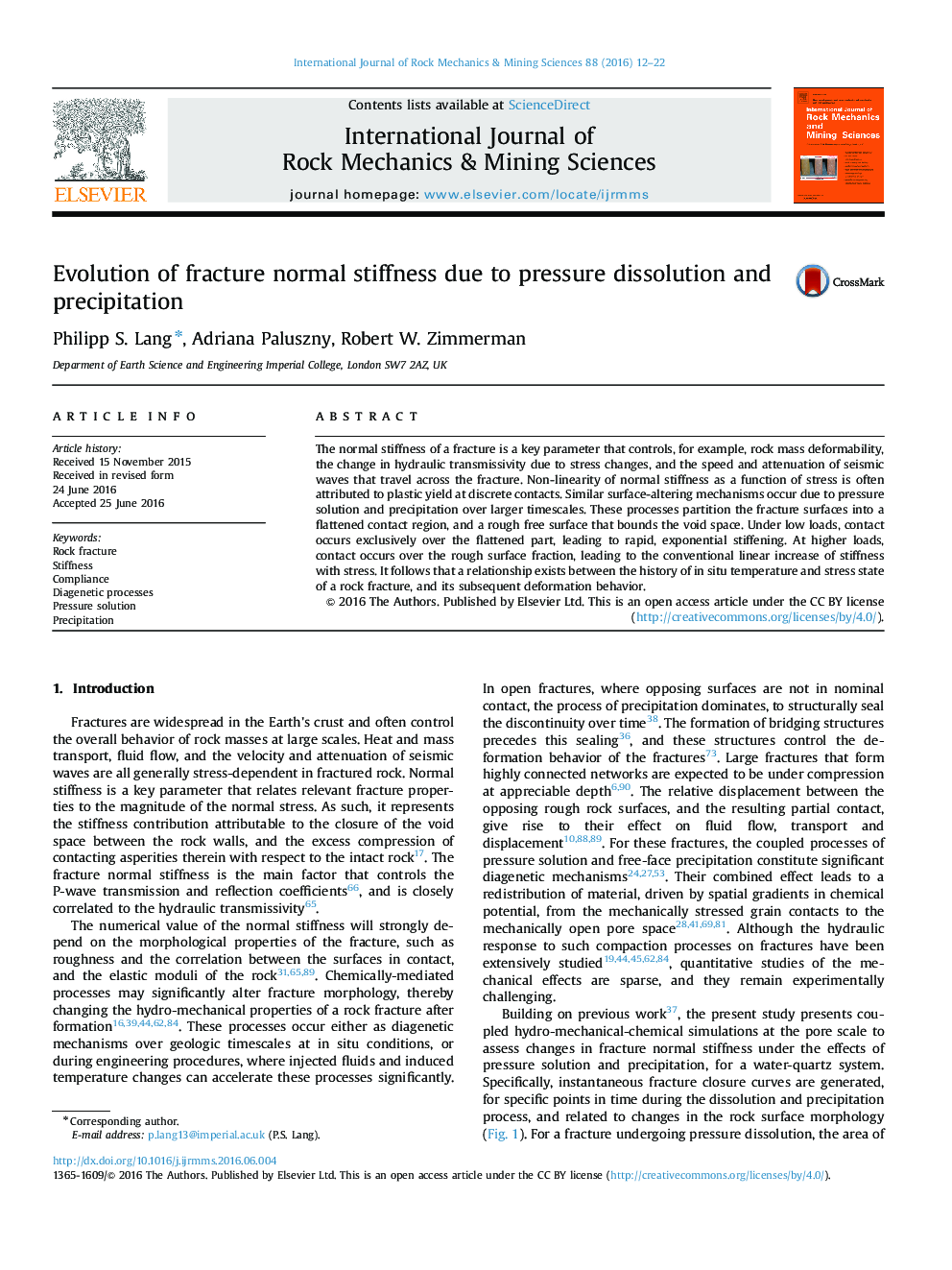| Article ID | Journal | Published Year | Pages | File Type |
|---|---|---|---|---|
| 808913 | International Journal of Rock Mechanics and Mining Sciences | 2016 | 11 Pages |
•Simulation of elastic compression, pressure solution and precipitation in fractures.•Instantaneous fracture normal stiffness evaluated during chemical alteration.•Closure curves reflect the two surface regions, dissolved smooth and initial rough.•In-situ pressure marks the transition between two stiffness regimes.•Elevated, dissolved surface causes exponential increase in stiffness.
The normal stiffness of a fracture is a key parameter that controls, for example, rock mass deformability, the change in hydraulic transmissivity due to stress changes, and the speed and attenuation of seismic waves that travel across the fracture. Non-linearity of normal stiffness as a function of stress is often attributed to plastic yield at discrete contacts. Similar surface-altering mechanisms occur due to pressure solution and precipitation over larger timescales. These processes partition the fracture surfaces into a flattened contact region, and a rough free surface that bounds the void space. Under low loads, contact occurs exclusively over the flattened part, leading to rapid, exponential stiffening. At higher loads, contact occurs over the rough surface fraction, leading to the conventional linear increase of stiffness with stress. It follows that a relationship exists between the history of in situ temperature and stress state of a rock fracture, and its subsequent deformation behavior.
Graphical abstractFigure optionsDownload full-size imageDownload as PowerPoint slide
